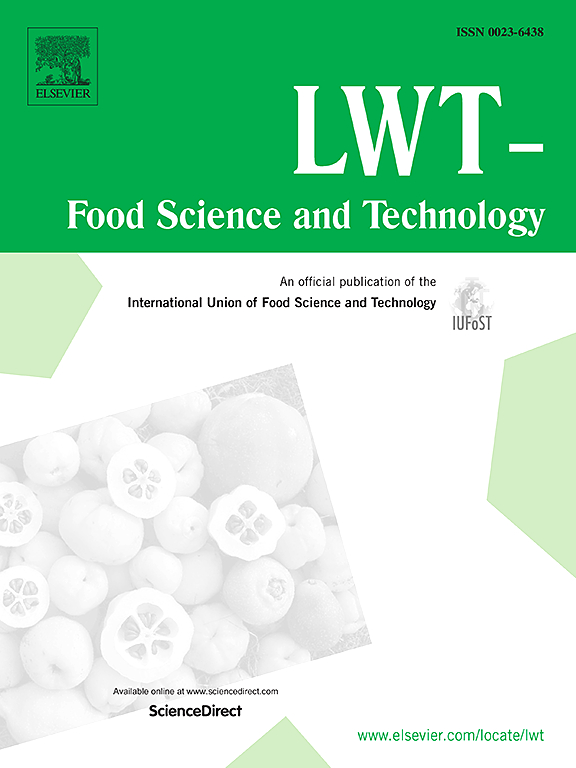Co-encapsulation of saffron petal and Stachys schtschegleevii extracts via complex coacervation and graphene oxide-assisted spray drying for co-delivery and stability enhancement
IF 6
1区 农林科学
Q1 FOOD SCIENCE & TECHNOLOGY
引用次数: 0
Abstract
This study focused on the co-encapsulation of selected bioactive compounds including saffron petal (SPE) and Stachys schtschegleevii (SSE) extracts using complex coacervation and spray drying. SPE or SSE was first encapsulated via complex coacervation between chitosan and gum Arabic. The resulting mixture, along with SSE or SPE, maltodextrin, basil seed gum, and graphene oxide (GO, 0.1–0.2 %), was then spray dried. The mean particle size and polydispersity index of the SPE (SPECO) and SSE (SSECO) coacervates were 385.32 nm and 0.3, and 579.06 nm and 0.32, respectively. The co-encapsulated powders had spherical shapes with wrinkled surfaces, and nanoparticles ranging from 141 to 291 nm were observed on their surfaces. Increasing the GO concentration reduced surface wrinkling but increased the mean particle diameter. FTIR analysis confirmed the successful co-encapsulation of bioactive compounds through physical interactions. The encapsulation sequence, GO concentration, and type of core material significantly influenced the release rates of anthocyanins (from SPE) and D-germacrene (from SSE). The co-encapsulation system improved bioavailability through the co-delivery of core materials, achieving an average release of 88 % in the intestine.

求助全文
约1分钟内获得全文
求助全文
来源期刊

LWT - Food Science and Technology
工程技术-食品科技
CiteScore
11.80
自引率
6.70%
发文量
1724
审稿时长
65 days
期刊介绍:
LWT - Food Science and Technology is an international journal that publishes innovative papers in the fields of food chemistry, biochemistry, microbiology, technology and nutrition. The work described should be innovative either in the approach or in the methods used. The significance of the results either for the science community or for the food industry must also be specified. Contributions written in English are welcomed in the form of review articles, short reviews, research papers, and research notes. Papers featuring animal trials and cell cultures are outside the scope of the journal and will not be considered for publication.
 求助内容:
求助内容: 应助结果提醒方式:
应助结果提醒方式:


